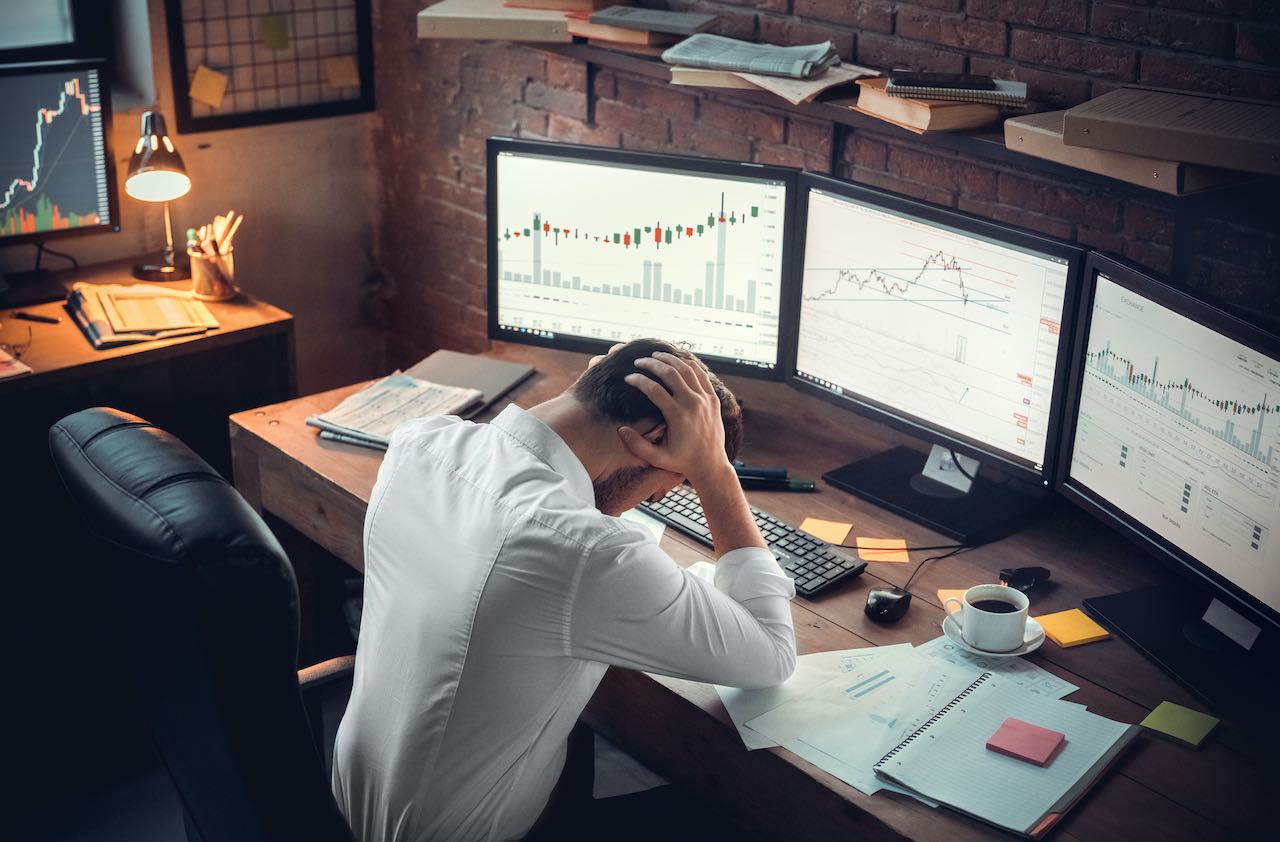Why a Savvy Bond Manager Is Buying Stocks
Eaton Vance’s Kathleen Gaffney sees little value in the bond market today

With the ten-year Treasury yielding a paltry 2.2% and yields on corporate debt, including low-quality "junk" bonds, likewise near historic lows, bond fund managers are in a bind. Kathleen Gaffney, one of the smartest managers I know, offers an unexpected solution: "If you want exposure to good corporate fundamentals but not a lot of interest-rate risk, where's a bond manager to go?" she asks. "It's obvious: stocks."
Gaffney, 51, who spent nearly 30 years at Loomis Sayles, recently jumped ship and is now lead manager of Eaton Vance Bond (symbol EVBAX), which launched January 31. The new fund has 20% of its assets in stocks, most of them in economically sensitive sectors, such as technology, energy and basic materials.
Why? "The recovery in the U.S. is gaining strength," says Gaffney. "There's a lot of innovation and efficiency that I think will take the U.S. to higher growth levels." Her stocks include Applied Materials (AMAT), Intel (INTC) and Occidental Petroleum (OXY). (Her old fund, Loomis Sayles Bond (LSBRX), has 5% in stocks.) It's not unheard of for bond managers to buy stocks, but having 20% in stocks is rare.

Sign up for Kiplinger’s Free E-Newsletters
Profit and prosper with the best of expert advice on investing, taxes, retirement, personal finance and more - straight to your e-mail.
Profit and prosper with the best of expert advice - straight to your e-mail.
Another 15% of Gaffney's fund is in convertible securities. Convertibles are hybrids — part stock, part bond. Like bonds, they pay yields, but they can be converted into stock at a predetermined price. When they're trading close to the price at which they can sensibly be converted into stock, they tend to trade almost in tandem with the stock. It's those kinds of converts that Gaffney currently favors.
It's tough to find value in today's bond market largely because the Federal Reserve's massive bond-purchasing program, known as quantitative easing, has shrunk yields to minuscule levels. (Bond prices and yields move in opposite directions.) The low rates are designed to boost the economy, in part by getting people to do exactly what Gaffney is doing — that is, taking more risk, whether by buying stocks, loaning money to lower-quality companies or buying homes.
I think we're in a bond bubble that will end badly for most bond investors. In fact, investors have been hurt by a recent rise in yields. Gaffney won't say that bonds have been in a bubble, but she sees little value in Treasuries — especially shorter-term Treasuries, which yield almost nothing. She sees even less value in many of her usual mainstays — investment-grade corporates that have less-than-pristine credit ratings, including some with junk-bond grades. Most of those bonds, she says, have been bid up to unrealistically high prices (and low yields). Most floating-rate bank loans (another Gaffney favorite) have also become too pricey for her taste.
The U.S. economy is still fairly fragile. But Gaffney thinks the Fed "can hold its portfolio of government bonds as long it wants." So rates will rise, but on the Fed's terms and only as the economy continues to pick up steam.
To Gaffney, the rest of the world doesn't look as good as the U.S. The best she can say about Europe is, "It's getting less worse." As for Japan, which is engaging in its own version of quantitative easing, Gaffney says she doesn't know how things will turn out, so she's staying away. Nor does she see a lot of value in bonds from other Asian countries.
Gaffney is bullish on Canada and Mexico, largely because of their proximity to the U.S.
Most of her fund, though, is made up of bonds issued by individual U.S. corporations that she thinks will perform better than the market expects in the coming months and years. Many of these bonds are relatively low-quality issues that should rise in value if their companies' fortunes improve. "To find good ideas today, you have to be focused on company fundamentals," she says.
I don't normally like my bond managers to buy stocks. But Gaffney's old fund, Loomis Sayles Bond, has always been almost as volatile as the average stock fund — not surprising, given its affection for junk bonds and foreign bonds. Gaffney's mentor, Dan Fuss, is still at the Loomis Sayles fund.
What is clear is that if you're ever going to buy Eaton Vance Bond, this is the time to do it. The fund has only $55 million in assets, and from inception through June 10, it returned 3.7% — compared with a loss of 0.7% for the Barclays US Aggregate Bond index. Getting a whip-smart veteran manager with a new, tiny fund is often a recipe for success.
The fund, unfortunately, charges a sales load of up to 4.75%, and its annual expense ratio is 0.95%. If you can't buy it without paying the load, it's probably not worth it.
I don't know how Gaffney's bet on stocks will turn out. But my hunch is that she will be proved right.
Steve Goldberg is an investment adviser in the Washington, D.C., area.
Get Kiplinger Today newsletter — free
Profit and prosper with the best of Kiplinger's advice on investing, taxes, retirement, personal finance and much more. Delivered daily. Enter your email in the box and click Sign Me Up.

-
 Stock Market Today: Stocks Soar on China Trade Talk Hopes
Stock Market Today: Stocks Soar on China Trade Talk HopesTreasury Secretary Bessent said current U.S.-China trade relations are unsustainable and signaled hopes for negotiations.
By Karee Venema
-
 2026 Disney Dining Plan Returns: Free Dining for Kids & Resort Benefits
2026 Disney Dining Plan Returns: Free Dining for Kids & Resort BenefitsPlan your 2026 Walt Disney World vacation now. Learn about the returning Disney Dining Plan, how kids aged three to nine eat free, and the exclusive benefits of staying at a Disney Resort hotel.
By Carla Ayers
-
 ESG Gives Russia the Cold Shoulder, Too
ESG Gives Russia the Cold Shoulder, TooESG MSCI jumped on the Russia dogpile this week, reducing the country's ESG government rating to the lowest possible level.
By Ellen Kennedy
-
 Morningstar Fund Ratings Adopt a Stricter Curve
Morningstar Fund Ratings Adopt a Stricter Curveinvesting Morningstar is in the middle of revamping its fund analysts' methodology. Can they beat the indices?
By Steven Goldberg
-
 Market Timing: The Importance of Doing Nothing
Market Timing: The Importance of Doing NothingInvestor Psychology Investors, as a whole, actually earn less than the funds that they invest in. Here’s how to avoid that fate.
By Steven Goldberg
-
 Commission-Free Trades: A Bad Deal for Investors
Commission-Free Trades: A Bad Deal for Investorsinvesting Four of the biggest online brokers just cut their commissions to $0 per transaction. Be careful, or you could be a big loser.
By Steven Goldberg
-
 Vanguard Dividend Growth Reopens. Enter at Will.
Vanguard Dividend Growth Reopens. Enter at Will.investing Why you should consider investing in this terrific fund now.
By Steven Goldberg
-
 Health Care Stocks: Buy Them While They're Down
Health Care Stocks: Buy Them While They're Downinvesting Why this sector should outperform for years to come
By Steven Goldberg
-
 Buy Marijuana Stocks Now? You'd Have to Be Stoned.
Buy Marijuana Stocks Now? You'd Have to Be Stoned.stocks Don't let your investment dollars go to pot
By Steven Goldberg
-
 4 Valuable Lessons From the 10-Year Bull Market
4 Valuable Lessons From the 10-Year Bull MarketInvestor Psychology Anything can happen next, so you must be mentally prepared.
By Steven Goldberg